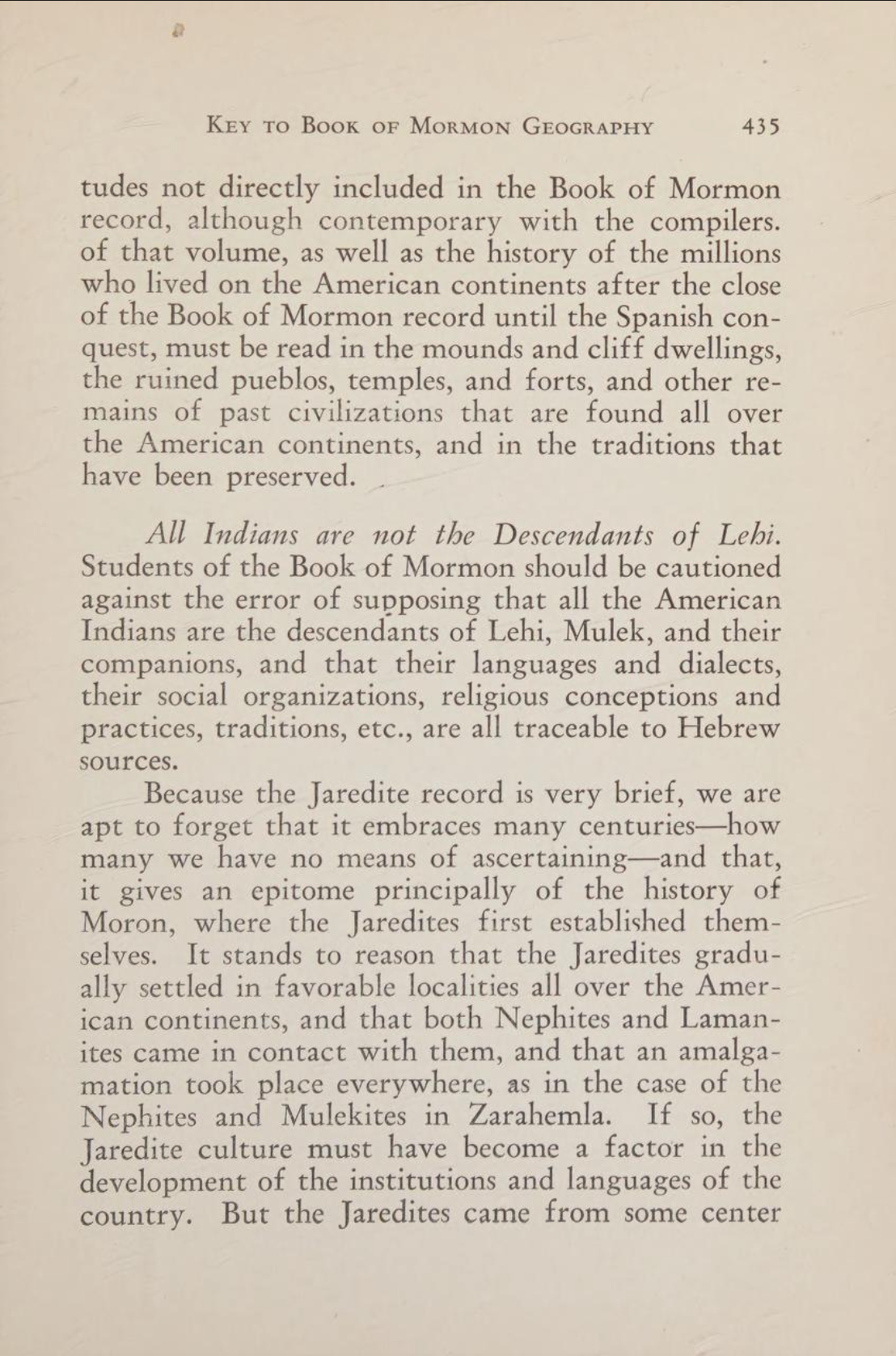Janne M. Sjodahl writes that the Book of Mormon does not claim Native Americans descend solely from Lehi.
- Type
- Book
- Hearsay
- Direct
- Reference
Janne M. Sjodahl, An Introduction to the Study of the Book of Mormon (Salt Lake City: Deseret News Press, 1927), 435–436
- Scribe/Publisher
- Deseret News Press
- Audience
- Reading Public
- Transcription
All Indians are not the Descendants of Lehi. Students of the Book of Mormon should be cautioned against the error of supposing that all the American Indians are the descendants of Lehi, Mulek, and their companions, and that their languages and dialects, their social organizations, religious conceptions and practices, traditions, etc., are all traceable to Hebrew sources.
Because the Jaredite record is very brief, we are apt to forget that it embraces many centuries—how many we have no means of ascertaining—and that, it gives an epitome principally of the history of Moron, where the Jaredites first established theselves. It stands to reason that the Jaredites gradu- ally settled in favorable localities all over the American continents, and that both Nephites and Lamanites came in contact with them, and that an amalgamation took place everywhere, as in the case of the Nephites and Mulekites in Zarahemla. If so, the Jaredite culture must have become a factor in the development of the institutions and languages of the country. But the Jaredites came from some center of population in Asia. Their language and culture were different from that of Lehi and Mulek. Their speech was probably closely related to the Aryan. And the impress they made upon the culture of the later arrivals has never been entirely effaced.
It has been asserted, for instance, that the Mexican language, commonly called Nahuatl, is in vocabulary and verb conjugation, purely Aryan, which had its origin in the highlands of east Iran, the country of the Elamites. But while it has Aryan characteristics, it has also evidences of Semitic relationship in its pronominal system, and many of its words are traceable to Semitic roots. This dual relationship would probably be found in other Indian tongues. The Jaredite influence is, possibly, more in evidence, in some respects, than the Semitic, but the mixture gives evidence of Jaredite and Nephite origin.
Nor is it improbable that America has received other immigrants from Asia and other parts of the globe, who may have introduced new creeds and institutions, although not mentioned in the Book of Mormon. The Indian traditions concerning culture-heroes, such as Votan, Quetzalcoatl, Manco Capac, Bochica, Waixepecocha, and others, who came mysteriously to the people in their degraded condition and taught them to till the ground, to spin and weave, to build houses, and to worship, and then passed out of view as mysteriously as they had come, may point to such immigrations, as well as to those which we know from the Book of Mormon.
- Citations in Mormonr Qnas
The B. H. Roberts Foundation is not owned by, operated by, or affiliated with the Church of Jesus Christ of Latter-day Saints.


